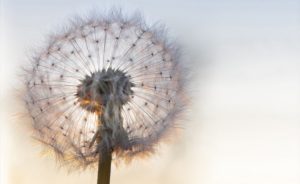 Our Moving into Meditation class focused on the ever changing nature of life. In our mindfulness practice we break society’s spell of feeling we are being carried away. We experience a wholeness upon savoring each moment with full attention. We drew inspiration from meditation teacher and writer, Toni Bernhard‘s book: How to Wake Up: A Buddhist Inspired Guide to Navigating Joy and Sorrow. Toni contends that by embracing life – as it is – we have the potential to realize well-being. In her article, Meditation in Motion, meditation and yoga instructor Jill Satterfield encourages us to explore full awareness of our bodily experience to wake up and be with what is. Finally, Jane Hirshfield‘s exquisite poetry takes us deeper into our creatureliness.
Our Moving into Meditation class focused on the ever changing nature of life. In our mindfulness practice we break society’s spell of feeling we are being carried away. We experience a wholeness upon savoring each moment with full attention. We drew inspiration from meditation teacher and writer, Toni Bernhard‘s book: How to Wake Up: A Buddhist Inspired Guide to Navigating Joy and Sorrow. Toni contends that by embracing life – as it is – we have the potential to realize well-being. In her article, Meditation in Motion, meditation and yoga instructor Jill Satterfield encourages us to explore full awareness of our bodily experience to wake up and be with what is. Finally, Jane Hirshfield‘s exquisite poetry takes us deeper into our creatureliness.
Guided Relaxation
Welcome. Welcome to this moment and notice how it is always becoming . . . ending . . . becoming . . . again and again . . . feeling sensations becoming . . . ending . . . becoming . . . again and again . . . sensing in-breath radiating . . . out-breath releasing . . . Pema Chodron writes:
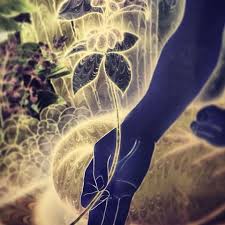 . . . nothing is static or fixed, . . . all is fleeting and impermanent . . . the first mark of existence . . . the ordinary state of affairs. Everything . . . in process. Everything – every tree, every blade of grass, all the animals, insects, human beings, . . . the animate and the inanimate – is always changing, moment to moment . . .
. . . nothing is static or fixed, . . . all is fleeting and impermanent . . . the first mark of existence . . . the ordinary state of affairs. Everything . . . in process. Everything – every tree, every blade of grass, all the animals, insects, human beings, . . . the animate and the inanimate – is always changing, moment to moment . . .
And we are part of it all. All a part of us . . . we are home to countless of microorganisms . . . bacteria, archaea, fungi, protists and viruses . . . living within and also on our bodies. . . . many of these creatures are essential to our well being . . . and they too arise and pass away . . .
In her article, Meditation in Motion, Jill Satterfield writes:
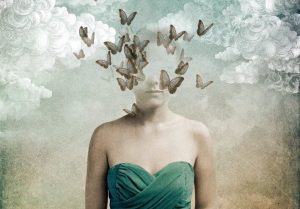 The body isn’t in the past or future, it’s not conceptual or imagined; it’s part of nature and contains all of nature’s elements. It houses our awareness, is shaped by our stories, thoughts, and emotions, and holds our memories within its tissues. The body is our house—and how we live in it and where we occupy it are uniquely ours, as well as being part of the common human experience. The body is a treasure trove and an exquisite vehicle for our practice of waking up and being with what is.
The body isn’t in the past or future, it’s not conceptual or imagined; it’s part of nature and contains all of nature’s elements. It houses our awareness, is shaped by our stories, thoughts, and emotions, and holds our memories within its tissues. The body is our house—and how we live in it and where we occupy it are uniquely ours, as well as being part of the common human experience. The body is a treasure trove and an exquisite vehicle for our practice of waking up and being with what is.
Our exquisite vehicle transports us to and from ever changing experiences. This impermanence is one of the principle teachings of Buddhist philosophy. . . . being born we are ever subject to illness, old age, death and losing who and what we hold dear. We often live as if life is otherwise . . . the truth of impermanence is obscured in our everyday experience . . . for the most part we see the same people, engage in the same activities and even repeatedly think the same thoughts and feel the same feelings. This gives us the illusion of permanence. The language we use to name the objects of perception tends to freeze them in our minds.
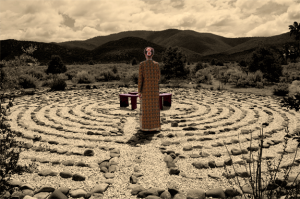 In mindfulness practice, we pause, we look carefully . . . and recognize how change . . . no thought or emotion recurs in exactly the same way . . . or continues indefinitely . . . In the fullness of time we can witness the ever changing quality of the objects we perceive . . . unfolding slowly as with a mountain or chronic pain . . . or quickly as with a cloud or flower.
In mindfulness practice, we pause, we look carefully . . . and recognize how change . . . no thought or emotion recurs in exactly the same way . . . or continues indefinitely . . . In the fullness of time we can witness the ever changing quality of the objects we perceive . . . unfolding slowly as with a mountain or chronic pain . . . or quickly as with a cloud or flower.
Toni Bernhard, author of How to Wake Up explains that learning to be mindful can relieve us of the suffering we add to life’s challenges. Careful attention reveals the moment-to-moment changes inherent in being alive. Our minds fix a solid block of pain in the body. In the fullness of time we become aware of how the pain is
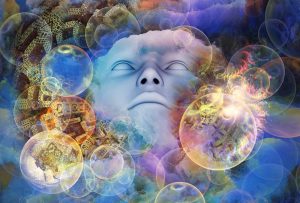 . . . a constantly changing mixture of tightness, heat, cold, pulsations, waves of more and less intense sensations. . . . We can see how conditions in every moment contribute to the arising of the next moment. . . Seneca, the first century Roman philosopher, said to count each day as a separate life. In Buddhist philosophy . . . every moment is a separate life. . . . every moment is a fresh start. In the previous moment we may have blamed ourselves for something but in this moment we can change that response to one of kindness and compassion toward ourselves. . . . if we miss that chance, the very next moment offers another fresh opportunity. Every moment holds the possibility of awakening to a feeling of peace and well being.
. . . a constantly changing mixture of tightness, heat, cold, pulsations, waves of more and less intense sensations. . . . We can see how conditions in every moment contribute to the arising of the next moment. . . Seneca, the first century Roman philosopher, said to count each day as a separate life. In Buddhist philosophy . . . every moment is a separate life. . . . every moment is a fresh start. In the previous moment we may have blamed ourselves for something but in this moment we can change that response to one of kindness and compassion toward ourselves. . . . if we miss that chance, the very next moment offers another fresh opportunity. Every moment holds the possibility of awakening to a feeling of peace and well being.
How do we respond to these possibilities? Does rigidity prolong our entrapment in struggle? Can we loosen our hold on what we want to be different? How can we bring mindfulness . . . careful attention to our experience?
Jill Satterfield explains:
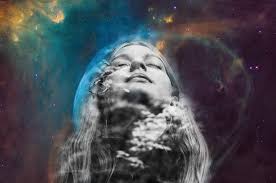 The body senses thoughts and emotions, and it displays this psychic knowing in sensations before our mind actually cognizes them. So being in tune with our bodies is a way to be intimately involved in having choice. Noticing a small vibration, a contraction, or a tightening of the breath all can signal that something is about to be announced, and if not heeded it might be announced in a rather big way. . . . As we inhabit our body with increasing sensitivity, we learn its unspoken language and patterns, which gives us tremendous freedom to make choices. The practice of cutting thoughts and dispersing negative repetitive patterns can be simplified by attending to the patterns in the body first, before they begin to be spun around in the mind.
The body senses thoughts and emotions, and it displays this psychic knowing in sensations before our mind actually cognizes them. So being in tune with our bodies is a way to be intimately involved in having choice. Noticing a small vibration, a contraction, or a tightening of the breath all can signal that something is about to be announced, and if not heeded it might be announced in a rather big way. . . . As we inhabit our body with increasing sensitivity, we learn its unspoken language and patterns, which gives us tremendous freedom to make choices. The practice of cutting thoughts and dispersing negative repetitive patterns can be simplified by attending to the patterns in the body first, before they begin to be spun around in the mind.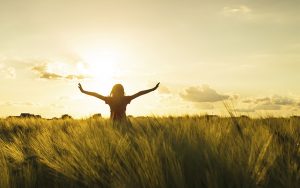
How do we inhabit our bodies? How do we learn their unspoken language? How do we realize the possibility of freedom? How are we living in our bodies? Feeling our breath? How does our posture reflect our thought and emotion? We can begin simply . . . to be mindful of the breath . . . gradually coming to sense those areas in the body that are contracted or holding . . . we bring our heart and mind together so intimately. We take care, we take time to be with what is – we take the opportunity to be more spacious and at ease. Toni writes that “uncertainty and unpredictability can be our friends – after all they permeate every aspect of our lives. . . . All we can count on is that the present moment will be exactly as it is.”
In her New Dimensions interview, The Unfolding of What is Hidden, poet Jane Hirshfield asserts that poetry can stop time. Poetry can expand time.
Like the Small Hole by the Path-Side Something Lives in – Jane Hirshfield
Like the small hole by the path-side something lives in,
in me are lives I do not know the names of,
nor the fates of,
nor the hungers of or what they eat.
They eat of me.
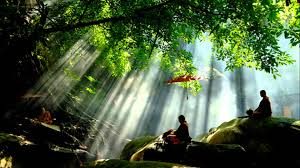 Of small and blemished apples in low fields of me
Of small and blemished apples in low fields of me
whose rocky streams and droughts I do not drink.
And in my streets—the narrow ones,
unlabelled on the self-map—
they follow stairs down music ears can’t follow,
and in my tongue borrowed by darkness,
in hours uncounted by the self-clock,
they speak in restless syllables of other losses, other loves.
There too have been the hard extinctions,
missing birds once feasted on and feasting.
There too must be machines
like loud ideas with tungsten bits that grind the day.
A few escape. A mercy.
They leave behind
small holes that something unweighed by the self-scale lives in.
Let us explore our inner fields, rocky streams, beyond the maps of self – and perhaps find mercy in what is left behind.
